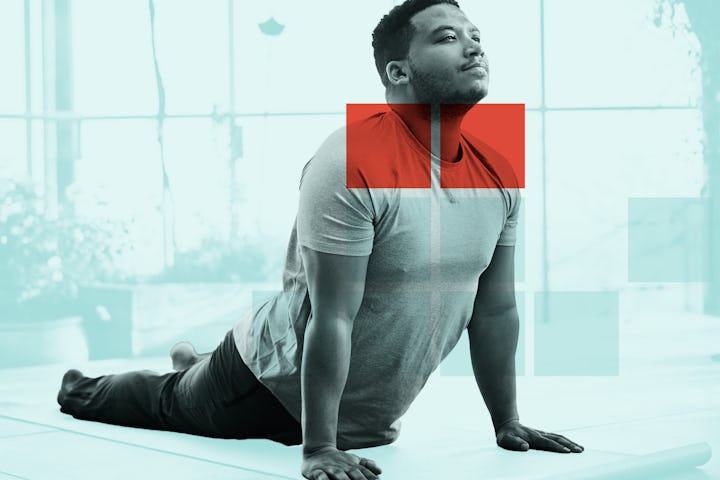5 Neck Exercises Everyone Should Do To Build Strength And Prevent Pain
Weak necks lead to imbalanced bodies. Time to get back on track.

The neck has a tough job. It keeps a damned large mass (your head) attached to a much larger and extremely mobile one (your torso). As such it is often a weak point in the balance you need to stay healthy and maintain strong dynamic posture. Signs of the weakness aren’t always super obvious and don’t necessarily lead to neck fat or neck pain. Instead poor posture and a lack of attention to the neck can cause injuries further down the body. Brad Tracy, a Physical Therapist, Board Certified Clinical specialist within Orthopedics, and a Fellow within the American Academy of Orthopedic Manual physical Therapist suggests everyone get ahead of neck problems with exercises that boost dynamic posture.
You will notice that none of the exercises Tracy suggests below focus specifically on moving your neck muscles. This is by design. Your neck is connected to your torso and when talking about posture, the thoracic region is a good place to start. It is also important to look at posture and how it relates to the neck as thinking about posture as being a dynamic thing, not solely a static thing, Tracy says. “It is important to maintain movement as to be able to move in and out of different postures,” he says.
In terms of reps, Tracy suggest keeping all of your exercises practical in congruence with your everyday life. “Take 10 minutes during your day and give your body movement with each of these exercises for at least five repetitions. These work as great as ‘movement’ breaks from your typical day to day or to work into your routine,” Tracy said. The exact number may not be as critical as the fact that you are introducing new movements into your day.
Foam Roller Thoracic Extensions
“If you slouch down, that is movement is primarily occurring in your thoracic spine which is really going to tilt the head backward in order to align the eyes with the horizon,” Tracy said. “Where we commonly see impairment in mobility is often within the thoracic spine specifically with thoracic extension and thoracic rotation.” A simple foam roller exercise can help you regain or maintain the ability for your thoracic spine to extend. To perform the exercise, lay on your back with a foam roller horizontally placed along your shoulder blades. Use your hands to support your head and have your knees up with your feet planted on the ground. Then gently stretch back, moving your torso toward the floor.
Lying Thoracic Rotation (or the Thoracic Open Book Stretch)
"If I were laying on my side with my arms stretched out as if my arms were a book and I am opening the book. I am bringing one arm over to the opposite side of the floor. These go by a variety of names, but I call them a thoracic open book stretch because people remember that," Tracy said. “Imagine that your two arms are the covers of a book, open the book as you bring your top arm across your body, allow your upper body to rotate while keeping your knees together.
Wall Angels
Proper maintenance of the muscles around your scapula are another key piece to maintaining a strong neck. Wall Angels are a great way to maintain those muscles—specifically the middle trapezius, rhomboids, and lower trapezius. Stand against a wall with your lower back flush the wall and your head touching the wall as well. Bring your arms out to your sides and bring your elbows to as close to a 90-degree angle as feels comfortable. Place the backs of your fingertips on the wall and draw your hands up the wall and back down slowly.
Cobra Exercise
This is a classic yoga move that addresses common impairments in areas referred to as the deeper neck flexors as well as the cervical extensors. At its most basic, you lay on your stomach, keep your elbows at a 90-degree angle with the floor and slowly bring your head up. “Imagine your body as a banana peel as you ‘peel’ your body from the floor. As you raise your body from the floor, go slowly and just go as far as is comfortable for you. As you lower your body back down, go slowly,” Tracy wrote.
Door Framing Exercise
Tracy suggests another exercise to help maintain the muscles in the deeper neck flexors as well as the cervical extensors that he named himself: the door framing exercise. Start standing straight up and imagine that you “You are starting with your palms together and raising your arms up to this imaginary doorway or door frame bringing your palms up to the door frame and then sliding across the top and then the sides of this imaginary door frame," Tracy said.
This article was originally published on